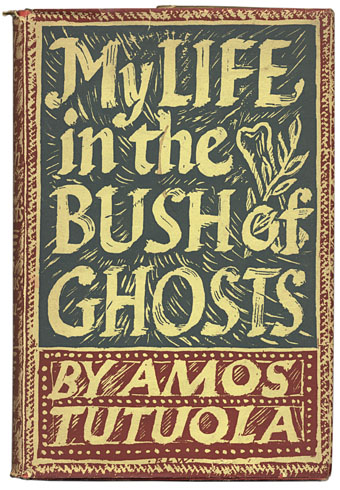Together Again in Different Time Zones
| David Byrne & Brian Eno.
Tag: David Byrne
Moonlight in Glory
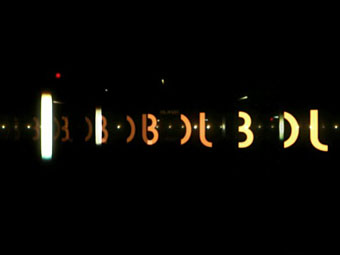
Great abstract animation from the Trollbäck design company for Moonlight in Glory, a track from My Life in the Bush of Ghosts by Brian Eno & David Byrne. Via Design Observer.
In a similar vein there’s Bruce Connor‘s 1981 film for another track, Mea Culpa. Connor also produced a film for America is Waiting from the same album. Continuing the interpretative theme, Eno & Byrne made the album tracks publicly available in 2006 to potential remixers. Some results of that, Our Lives in the Bush of Disquiet, can be found here and here.
Update: the original Moonlight link was deleted but you can still see the video on their site if you hunt through the sample of works shown on the Trollbäck home page.
Elsewhere on { feuilleton }
• The abstract cinema archive
Previously on { feuilleton }
• Tiger Mountain Strategies
• Generative culture
• My Life in the Bush of Ghosts
Os Mutantes
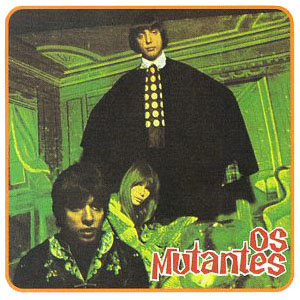
Os Mutantes: Back from Outer Space
Though rarely heard outside their Brazilian homeland (especially during their brief career), Os Mutantes were one of the most dynamic, talented, radical bands of the psychedelic era – quite an accomplishment during a period when most every rock band spent quality time exploring the outer limits of pop music. A trio of brash musical experimentalists, the group fiddled with distortion, feedback, musique concrète, and studio tricks of all kinds to create a lighthearted, playful version of extreme Brazilian pop.
The band was formed by the two Baptista brothers, Arnaldo (bass, keyboards) and Sérgio (guitar). In 1964, the pair (sons of a celebrated São Paulo concert pianist) formed a teenage band named the Wooden Faces. After they met Rita Lee, the three played together in the Six Sided Rockers before graduation broke up the band. Yet another name change (to O Conjunto) preceded the formation of Os Mutantes in 1965, the name coming from the science fiction novel O Planeta Dos Mutantes. With a third Baptista brother (Cláudio) helping out on electronics, the group played each week on a Brazilian TV show (O Pequeno Mundo de Ronnie Von) and became involved with the burgeoning tropicalia movement. Mutantes backed tropicalista hero Gilberto Gil at the third annual Festival of Brazilian Music in 1967, then appeared on the watershed 1968 LP Tropicalia: Ou Panis et Circenses, a compilation of songs from the movement’s major figures: Gil, Caetano Veloso, Gal Costa, Tom Zé, and Nara Leão.
By the end of 1968, Os Mutantes delivered their self-titled debut, a raucous, entertaining mess of a record featuring long passages of environmental sounds, tape music, and tortured guitar lines no self-respecting engineer would’ve allowed in the mix (especially at such a high volume). After time spent backing Veloso and recording a second LP of similarly crazed psychedelic pop, the band ventured to France and Europe for a few music conference shows. Returning to Brazil, they set up their own multimedia extravaganza – complete with film, actors, dancing, and audience participation. Despite distractions of all kinds, the group also managed to record LPs in 1970 (Divina Comedia Ou Ando Meio Desligado) and 1971 (Jardim Eletrico), both of which charted the band’s shifting interests from psychedelic to blues and hard rock.
After 1972’s E Seus Cometas No Pais Do Baurets, Rita Lee departed or was fired from the band (accounts vary), and resumed a solo career that ran concurrently with Os Mutantes (her debut, 1970’s Build Up, had been co-produced by the Baptistas). Later Mutantes LPs displayed influences from prog rock, and after Arnaldo Baptista left the fold as well, the band’s LPs included a succession of bandmembers – later-to-be-legendary producer Liminha, keyboard player Túlio, and drummer Rui Motta. Except for a 1976 live record, 1974’s Tudo Foi Feito Pelo Sol was the band’s final LP. Sérgio later moved to America, where he played with Phil Manzanera, among others. After recording a 1974 solo album, Arnaldo played with a new band (Space Patrol) during the late ’70s and spent time in a psychiatric hospital before emerging for his second solo work, 1982’s Singin’ Alone. Meanwhile, though Rita Lee’s solo career began sputtering near the end of the ’80s, the band turned down a request for a 1993 reunion show by Nirvana’s Kurt Cobain. Six years later, the Omplatten label reissued the first three Mutantes records, and David Byrne assembled the Everything Is Possible compilation through Luaka Bop.
John Bush
My Life in the Bush of Ghosts
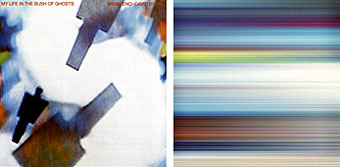
Brian Eno and David Byrne’s 1981 album gets a remastered reissue this month, something I’m looking forward to hearing as all the early Eno albums sounded pretty crappy on their initial CD release. My Life in the Bush of Ghosts is being given an added publicity push this time round with much being made of its status as an inspiration to later generations of musicians and DJs. The album site includes tracks that will be available for anyone to download (after signing a Creative Commons form) for purposes of remixing.
While the album’s wonderful grooves certainly deserve their reputation, I still get rather aggravated by claims made for its landmark status as “the first sampling album” or similar. These assertions derive from the way most of the tracks mix recordings taken from American radio or from Arabian “world music” albums in a manner that was unusual at the time, but certainly not without precedent. I think Eno and Byrne would be first to acknowledge that they were popularising a technique that already existed, just as Eno brought Terry Riley’s tape loop experiments to a wider audience on recordings such as (No Pussyfooting), Evening Star and Discreet Music.
 There are at least two Terry Riley-like figures behind the genesis of My Life…. One is Holger Czukay, bass player from the German band Can, and editor and tape collagist for all of Can’s music. Czukay released a solo album in 1979 called Movies which does exactly what My Life… does but considerably better for the most part (there’s even a track entitled Persian Love that mixes Middle-Eastern radio singers with Czukay’s guitar). My Life… overlays the voices (almost all from a single source only) on the music in a manner which isn’t particularly inventive; Czukay on the other hand not only interleaves multiple recordings across his tracks but even makes it sound as though the radio recordings have been made specially for each track. Cool in the Pool contains a lengthy sax solo taken from the radio that matches Czukay’s music so perfectly he must have planned the entire track around the place where the solo would occur. Eno would have been well aware of this album seeing as he’s a lifelong Can aficionado and played with Czukay on a couple of the Cluster releases in the late-Seventies.
There are at least two Terry Riley-like figures behind the genesis of My Life…. One is Holger Czukay, bass player from the German band Can, and editor and tape collagist for all of Can’s music. Czukay released a solo album in 1979 called Movies which does exactly what My Life… does but considerably better for the most part (there’s even a track entitled Persian Love that mixes Middle-Eastern radio singers with Czukay’s guitar). My Life… overlays the voices (almost all from a single source only) on the music in a manner which isn’t particularly inventive; Czukay on the other hand not only interleaves multiple recordings across his tracks but even makes it sound as though the radio recordings have been made specially for each track. Cool in the Pool contains a lengthy sax solo taken from the radio that matches Czukay’s music so perfectly he must have planned the entire track around the place where the solo would occur. Eno would have been well aware of this album seeing as he’s a lifelong Can aficionado and played with Czukay on a couple of the Cluster releases in the late-Seventies.
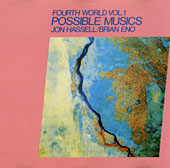 The other eminence gris behind My Life… is Jon Hassell, a composer and musician I’ve had the good fortune to work as a designer recently. Eno was very impressed by Hassell’s early “Fourth World” albums and helped Hassell produce the third of these, Possible Musics, in 1980. He also invited Hassell to play trumpet on Houses in Motion when he was producing Remain in Light for Talking Heads in the same year. Hassell has always maintained that My Life… came out of this period of his association with Eno and Byrne and that the album was originally intended to be a three-way Fourth World collaboration. Whatever the veracity of this, Peter Gabriel recognised the lineage in 1982 when he compiled the first WOMAD album, Music and Rhythm. Among a number of acknowledged talents from different countries playing what people still class as “world music”, there was Jon Hassell with a version of Ba-Benzélé from Possble Musics, and Holger Czukay with Persian Love. Oh yes, and a piece by David Byrne…
The other eminence gris behind My Life… is Jon Hassell, a composer and musician I’ve had the good fortune to work as a designer recently. Eno was very impressed by Hassell’s early “Fourth World” albums and helped Hassell produce the third of these, Possible Musics, in 1980. He also invited Hassell to play trumpet on Houses in Motion when he was producing Remain in Light for Talking Heads in the same year. Hassell has always maintained that My Life… came out of this period of his association with Eno and Byrne and that the album was originally intended to be a three-way Fourth World collaboration. Whatever the veracity of this, Peter Gabriel recognised the lineage in 1982 when he compiled the first WOMAD album, Music and Rhythm. Among a number of acknowledged talents from different countries playing what people still class as “world music”, there was Jon Hassell with a version of Ba-Benzélé from Possble Musics, and Holger Czukay with Persian Love. Oh yes, and a piece by David Byrne…
If this sounds like a denigration of My Life… it isn’t intended as one. I bought this album when it came out and still have the original vinyl copy. The criticism is addressed to lazy journalists whose assertions about musical history don’t always stand up to close scrutiny. To his credit, Paul Morley in the sleevenotes to the reissue acknowledges both Can and Jon Hassell but then he always was a journalist capable of thinking for himself, rather than parroting the platitudes of others.
Finally, here’s my copy of the book that gave the album its title. I’ve had this for years and still not read it. Maybe now would be a good time.
